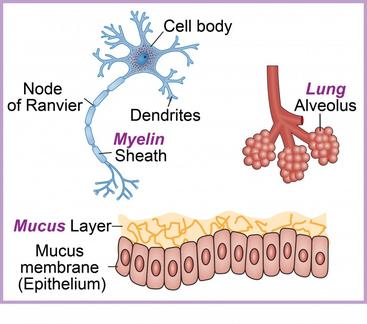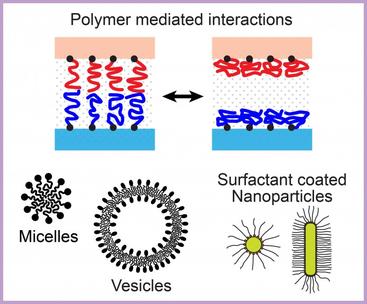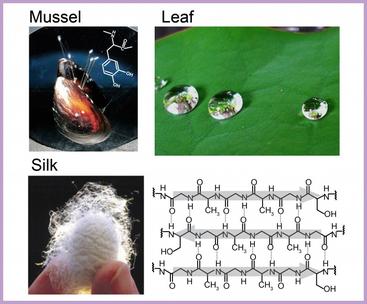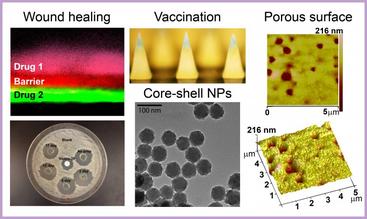Research
Overall Theme
Our lab conducts both fundamental and applied research in a broad range of interfacial science. We aim to understand fundamental issues in the surface and interface science of bio- and nano-materials and to transfer such knowledge into practical applications.
I. Fundamental Aspects
Biophysics and Biointerfaces
Despite impressive progress on understanding the biophysics of cellular mechanisms, the treatments of human diseases associated with lipid membranes and proteins have been challenged by the stunning complexity of the molecular architecture and the lack of understanding on intermolecular interactions at nanoscale. Our lab utilize Surface Forces Apparatus (SFA) technique, fluorescence microscopy coupled Langmuir trough, and other variety of advanced experimental techniques in order to better characterize such membrane-involved molecular process, to measure the interaction forces and rheological properties, and to study thermodynamic phase transition behaviors related to the disease process. By finding out a crucial link between subtle changes in the molecular-level organization/structure of membranes and overall structural changes, we expect to provide a molecular-level of understanding on the disease process which, in turn, allows the development of novel approaches to prevention, diagnosis and cure. The diseases of particular interest are multiple sclerosis (MS), skin/mucus associated infection, and chronic obstructive pulmonary disease (COPD).
Polymers, Colloids
As the size scale of materials gets smaller and smaller, understanding intermolecular interactions between these materials and between materials and other surfaces becomes increasingly needed not only for fundamental point of views but also for many technological processes. This scope of research includes the investigations on polymer-polymer adhesion and coalescence (coating, dyeing, and composite materials), the stability behavior of vesicle dispersions containing polymer additives (cosmetics, cleaning products, and paints), and oil-based lubricant systems containing additives (surfactant-coated nanoparticles).
II. Applied Aspects
Bio-inspired Materials
After billions of years of evolution, nature has learned what works, what is appropriate, and what would last long. We aim to understand the related phenomena and the associated principles responsible for nature building blocks and then to selectively adapt ideas from nature in order to engineer novel materials with unique and superior properties. In our lab, mussel, silk, and lotus leaf are three key natural systems from which we get inspiration, in particular, about their chemistry, composition, and structure. Based on this knowledge, we are developing novel mucoadhesive systems, antifouling surfaces, and biocompatible drug delivery systems.
Responsive and Adaptable Materials
Responsive and adaptive materials possess the unique capability to change structure in response to small environmental changes such as temperature, pH, salt, light, electrical fields and stress. The changes of adaptive materials can be driven by weak intermolecular interactions. Our group is involved in the development of novel type responsive and adaptive materials for biomedical and functional coating applications.



